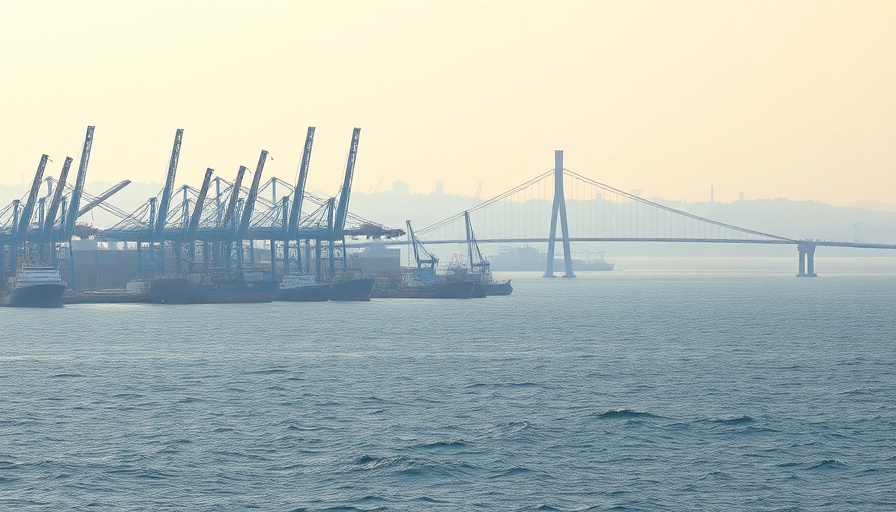
Understanding the Port Crisis: More Than Just Cargo Loss
The Port of Long Beach has been a bustling center for trade, seeing record volumes over the past months. However, as tariffs increase, the tide is turning. Officials are warning that May could see the steepest decline in cargo volumes seen in over a year, marking a concerning shift from the recent boom. This isn’t just about numbers; it signifies a profound impact on local jobs, consumer choices, and ultimately, the regional economy.
What's Behind the Shift? Tariffs and Their Impact
Chief Operating Officer Noel Hacegaba has raised alarms, noting a staggering 30% decrease in scheduled container arrivals. How did we get here? The hefty tariffs imposed by the Trump administration, particularly a 145% tariff on Chinese goods and retaliation from China with a 125% tax on outgoing U.S. products, have created a perfect storm. Chinese imports make up about 60% of cargo at the Port, creating a direct correlation between tariffs and declining trade volumes.
This economic squeeze is now echoing beyond the docks. It’s already affecting local businesses and, soon, consumers will find it more challenging to purchase everyday items like electronics, furniture, and clothing. No one wants to face a future where the shirt you like might not be available in your size or color.
The Ripple Effect: Job Losses and Community Impact
It's not just the economy that's at stake; it's the livelihoods of over 16,000 dock workers at the Port. With most workers living within a ten-mile radius, the repercussions will hit home. As ship calls decrease, workers have already started to see cut hours and reduced opportunities for overtime work. Sal DiCostanzo of ILWU Local 13 highlights the dire situation: dock workers are grappling with fewer ships and, consequently, fewer jobs. For a local workforce already on shaky ground, this news is nothing short of alarming.
The Future: What Can We Expect?
As we look ahead, industry experts foresee a significant slow down in exports as well. Many core exports such as oil seeds, recycled materials, and essential commodities are also projected to decline. The falloff in shipments will not only affect current stock levels but could pivot the nation's supply chain strategy.
How This Affects Consumers: Limited Choices Ahead
When considering the consumer impact, it’s crucial to understand that this is not just a short-term glitch. As shipping volumes dwindle, retailers will face supply chain difficulties, which could lead to shortages of seasonal items. Shoppers in the Bakersfield area may soon find themselves navigating a landscape where their favorite products are scarce. The memories of abundant choices we had a year ago could soon become a distant past.
Your Role as a Consumer: Awareness Is Key
As consumers, understanding these changes is vital. By staying informed about the economic landscape and the realities of tariffs, individuals can make better purchasing decisions. Being proactive in your buying habits can help mitigate personal shortages.
Conclusion: The Time to Adapt Is Now
As the situation unfolds, it's essential for residents of Bakersfield and surrounding areas to stay vigilant. Businesses and consumers alike need to recognize the implications behind the tariff policies and the ensuing economic shifts. The choices made today—from shopping habits to local support—will define our community's resilience against these challenges.
Don't wait for shortages to hit; start planning now. Shop local, stay adaptable, and share information with your neighbors to navigate these turbulent times together. Every small action counts.
 Add Row
Add Row  Add
Add 



Write A Comment